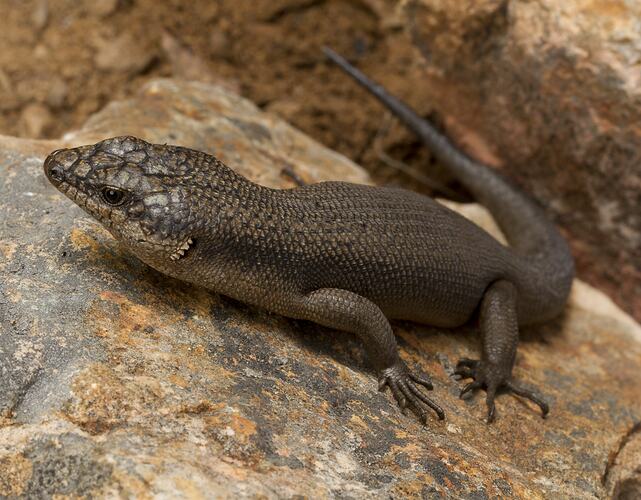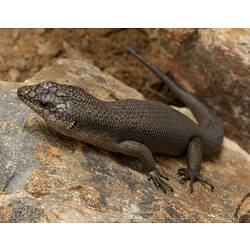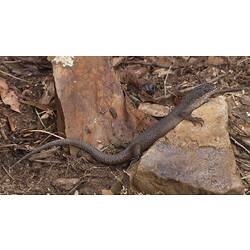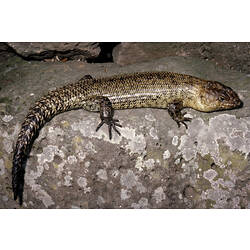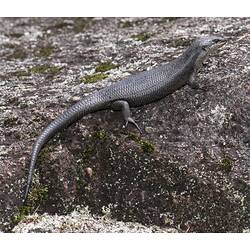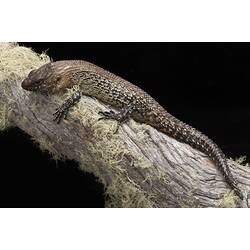General Description
Body colours and patterns vary; generally large and solid build. Scales shaped like a comb at the front of the ear hole. Up to 20 cm long (snout-vent).
Biology
Some of these skinks shelter in rock crevices; others shelter in burrows. They are omnivorous, eating plants and small invertebrates. Most species give birth to live young. There are about thirty species across Australia.
Distribution
Mainland Australia and Tasmania.
Habitat
Wet and dry sclerophyll forests, rocky habitats, woodlands and grasslands.
More Information
-
Animal Type
-
Animal SubType
-
Brief Id
Some with spiny tails, some with stripes, comb-shape scales near ear.
-
Colours
Black, Brown
-
Habitats
-
Diet
Omnivore
-
Diet Categories
Insects, Invertebrates, Plants
-
Endemicity
-
Conservation Statuses
CITES: Not listed, FFG Threatened List: Not listed, EPBC Act 1999: Not listed, IUCN Red List: Least Concern
-
Taxon Name
-
Common Name
Egernia Skink
-
Kingdom
-
Phylum
-
Subphylum
-
Class
-
Subclass
-
Order
-
Suborder
-
Infraorder
-
Family
-
Genus
